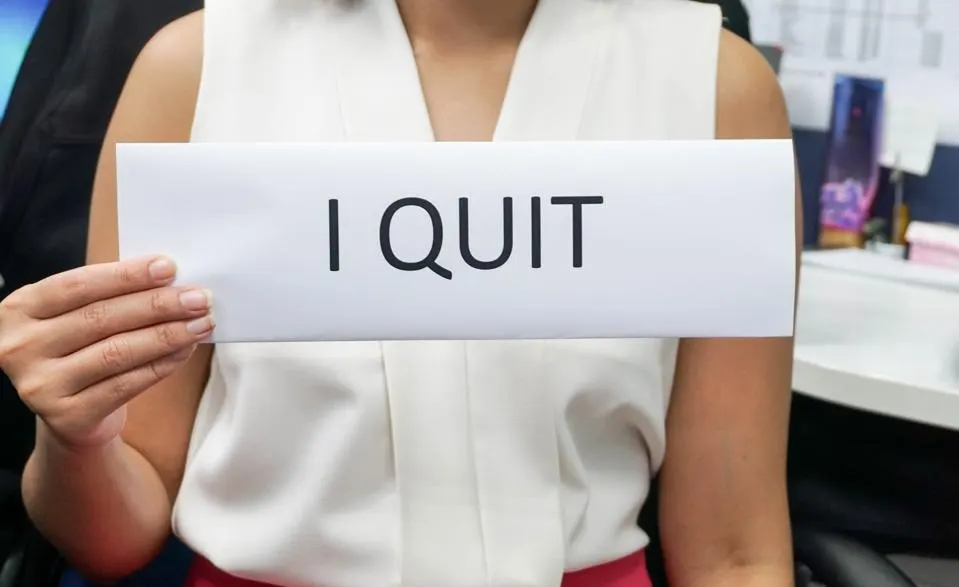A two-week resignation letter is a letter that an employee sends to their employer, letting them know they plan to quit in two weeks. Resignation letters are official announcements that an employee intends to leave their job. They usually include the reason(s) for the resignation as well as the date it will take effect. It also includes an offer to assist with the transition and your last day at the company. In the document, you might also express gratitude to the employer for any changes or assistance received and include an invitation to stay in contact.
The format for a resignation letter is straightforward and uncomplicated. The date on which the letter is being sent, the salutation, the body paragraphs, and the signature are its main supporting elements. Although it may seem unnecessary, a resignation letter is crucial for facilitating a seamless transfer and serving as documentation of your departure’s conditions.
The formal resignation procedure may include the need for a two-week notice letter, contingent on your employment terms. You can occasionally make use of your vacation days as your notice period and depart right away. Giving two weeks’ notice allows both you and your employer to finish up work-related tasks and find a successor.
1. Address the letter
Incorporate the date, the name of the company, and the addressee’s name, typically your supervisor, in your letter.
2. State your resignation
In the opening paragraph, notify your employer that you will be leaving in two weeks. Add the date of the last day you were employed.
3. Express your gratitude
In the second paragraph, express gratitude for the chances and experiences you’ve had at the organization. It is up to you whether or not to give a reason for your departure.
4. Mention the next steps
In your closing paragraph, inform your employer that you plan to carry out your responsibilities with the utmost care until your last day of employment. Offer to help with the changeover.
5. End your letter
Put a proper closure on your notice letter, like “Sincerely,” and sign your name.
Below is a sample two-week notice letter that contains all the necessary details for any resignation from any organization. It can be altered based on your circumstances and using your information.
[Date]Supervisor’s name] [Company name] [Company address]Dear [Your supervisor’s first name or preferred name], Please accept this as my formal resignation from [your job title] with [company name]. My last day will be [your final day of work], two weeks from today. I appreciate the support and valuable experiences I have gained during my time here. It has been a pleasure working with you and the team. Please let me know how I can help make this transition as smooth as possible.
Sincerely, [Your name]
Two-week notice email template
If you are unable to resign in person, over the phone, or via video conference, you may submit an email. Provide a clear subject line for your email, write a succinct, upbeat message body, and include your notification as an attachment. Here is a template to craft your email:
Subject: Resignation Letter – [Your Name]Dear [Your supervisor’s first name or preferred title], Please accept this as my formal resignation from [company name.] My last day will be [date], two weeks from today. I appreciate your support and the valuable experiences I have gained here. It has been a pleasure working with you and the team. Please let me know how I can help during this transition and make it as smooth as possible. I wish you all the best.
Sincerely, [Your name]
How to write a two-week resignation letter: What not to include in your resignation letter
- Information about your reason for leaving the company: Feel free to provide a succinct explanation, but avoid getting into specifics. Avoid the temptation to air all your grievances, and conduct yourself professionally.
- Information about your destination: It’s also not appropriate to boast about your next job or provide specifics about the hiring procedure, compensation, or benefits package in your resignation letter.
- Grievances concerning the business, its personnel, or its operations: Again, it is extremely unprofessional to criticize your employer in a resignation letter, even if your bad experience at the company is the reason you are leaving.
- Rambling: It’s preferable to draft a brief, direct resignation letter if you don’t have much to say. There is no reason to digress. There’s no need to ramble or make it longer than necessary.
Step One: Plan to meet with your supervisor face-to-face.
You can begin providing your two weeks’ notice once you’ve signed a formal contract with your new company and are aware of your start date. Once you get the letter, send your boss an email or Slack message to arrange a time to talk. Don’t announce your leaving to coworkers until you’ve had a conversation with your manager. Your manager must know the news.
Step Two: Provide a plan for the transition during the meeting.
Be brief and precise when you sit down with your management. Talking too much or giving a lengthy speech can make things awkward.
Say something like, “I wanted to meet with you today to let you know that I am very interested in the position you have offered, and I can’t pass it up.” I’m extending my notice by two weeks. I want you to know that I appreciate all of your advice and the opportunity for personal development, even if this wasn’t an easy choice to make.”
You must ignore the alluring prospects of your new position. Your main objective for this meeting should be to convey your gratitude and admiration for all that your manager has done to support your development.
Coming prepared with concrete steps you intend to take to ease the transition will also help your manager feel less stressed about losing you.
Lastly, turn in your letter of resignation. The official notice of two weeks will be given by the letter.
Step Three: Expect a counteroffer and be ready for it.
It would be unsettling if your manager unexpectedly informed you that, should you choose to stay, they would increase your pay or transfer you to a different position on a different team. Think through your plan of action if your manager makes a counteroffer before your meeting.
Give yourself some time to reflect on the reasons behind your departure from your present position and the benefits of your next one. Communicate with your management any conditions under which you would be willing to continue at your current job, and only agree to stay if you have written assurances of those conditions.
Naturally, if you’ve already agreed to a contract with your new job, this might not be doable. You should carefully consider your reputation before accepting the offer, even if you have merely verbally accepted it, as doing so will probably cause a rift with your new employer.
Before you sign a new contract, it is preferable to discuss with your boss any conditions that could significantly increase your level of happiness in your existing position. You can expressly state that you’ll start looking at alternative options if those needs aren’t satisfied.
Step Four: Learn the specifics of the advantages.
You must understand your alternatives about pensions, 401(K), health insurance, and benefits. Transferring benefits or health insurance from one employer to another might be challenging. Furthermore, your new employer might not be prepared to provide new coverage right away.
Step Five: Don’t focus on your work as much as you did the previous two weeks.
If you check out during the last two weeks of work and make very little effort, it will be hard to keep a good working relationship with your employer once you leave. First of all, your employer deserves all of your labor because they are still paying you. Secondly, the work you accomplish in your current employment will help you maintain stronger relationships in the future.
Colleagues will recall your final disposition. Give them something worthwhile to contemplate. You never know when and how your good standing will come in handy when it comes to networking.
To close any loose ends and make it simple for the next person to take over, you need to put in much effort. To let your team members know where specific files are located or where you left off on a project, for example, you might make a document.
You should still leave at the proper time, show up on time or even early, and continue to be a team player. If the other members of your team are staying late to complete a project ahead of schedule, you ought to follow suit.
Step Six: Offer warm and heartfelt goodbyes.
In today’s business environment, networking is crucial. You never know when one of your team members might help your younger brother land a gig or start working as a freelancer for your new business a few years down the line. Maintaining those connections is essential to career success.
Conclusion
Giving your employer and coworkers two weeks’ notice before quitting is a professional courtesy that shows your respect for them. You may keep up good ties and part ways amicably by writing a well-thought-out resignation letter. Clearly stating your intention to leave, expressing thanks, offering to help with the transition, and maintaining a professional and courteous tone throughout are the essential components. Even though leaving a job can be a difficult experience, handling it professionally will benefit you and open doors to other possibilities.





